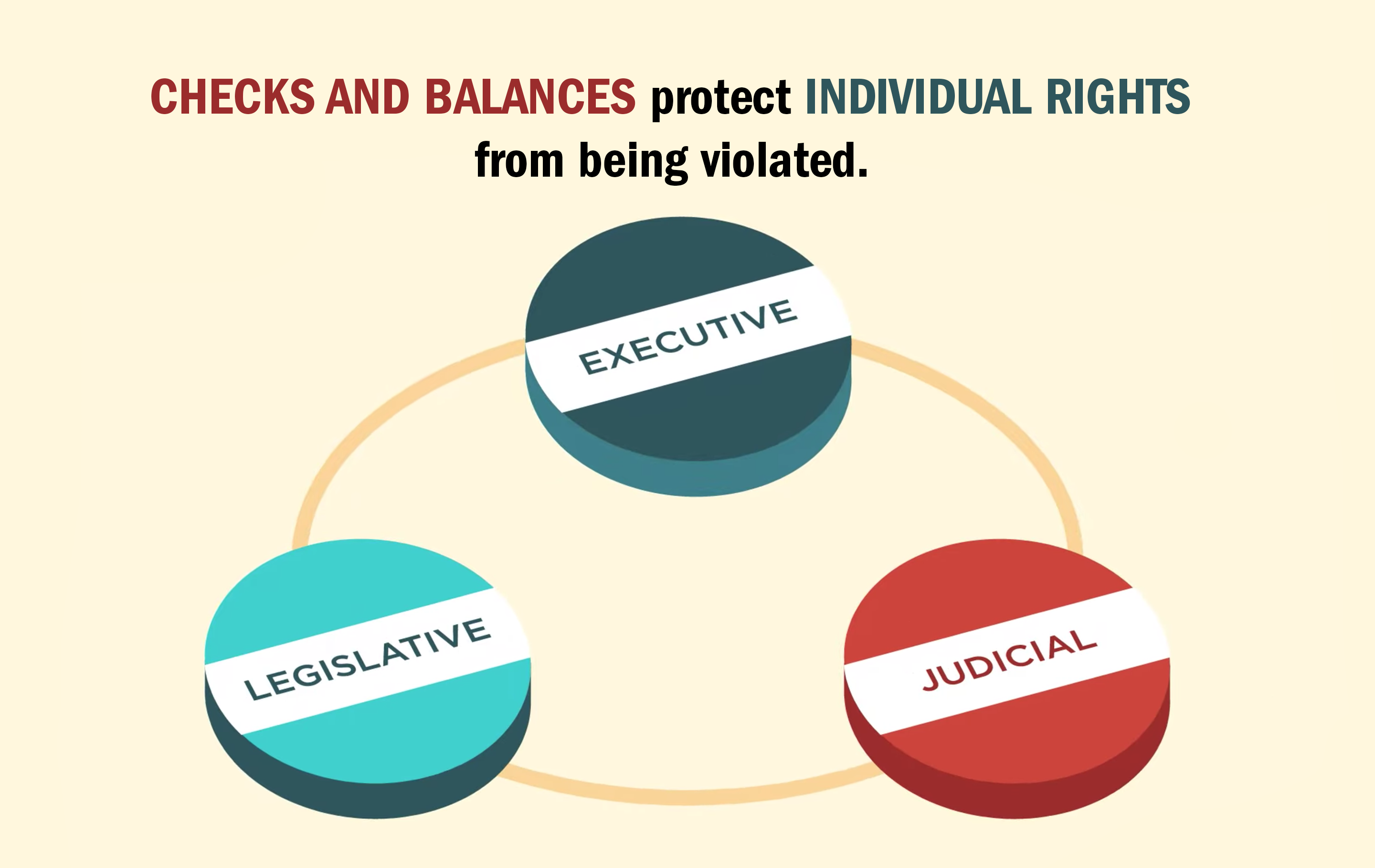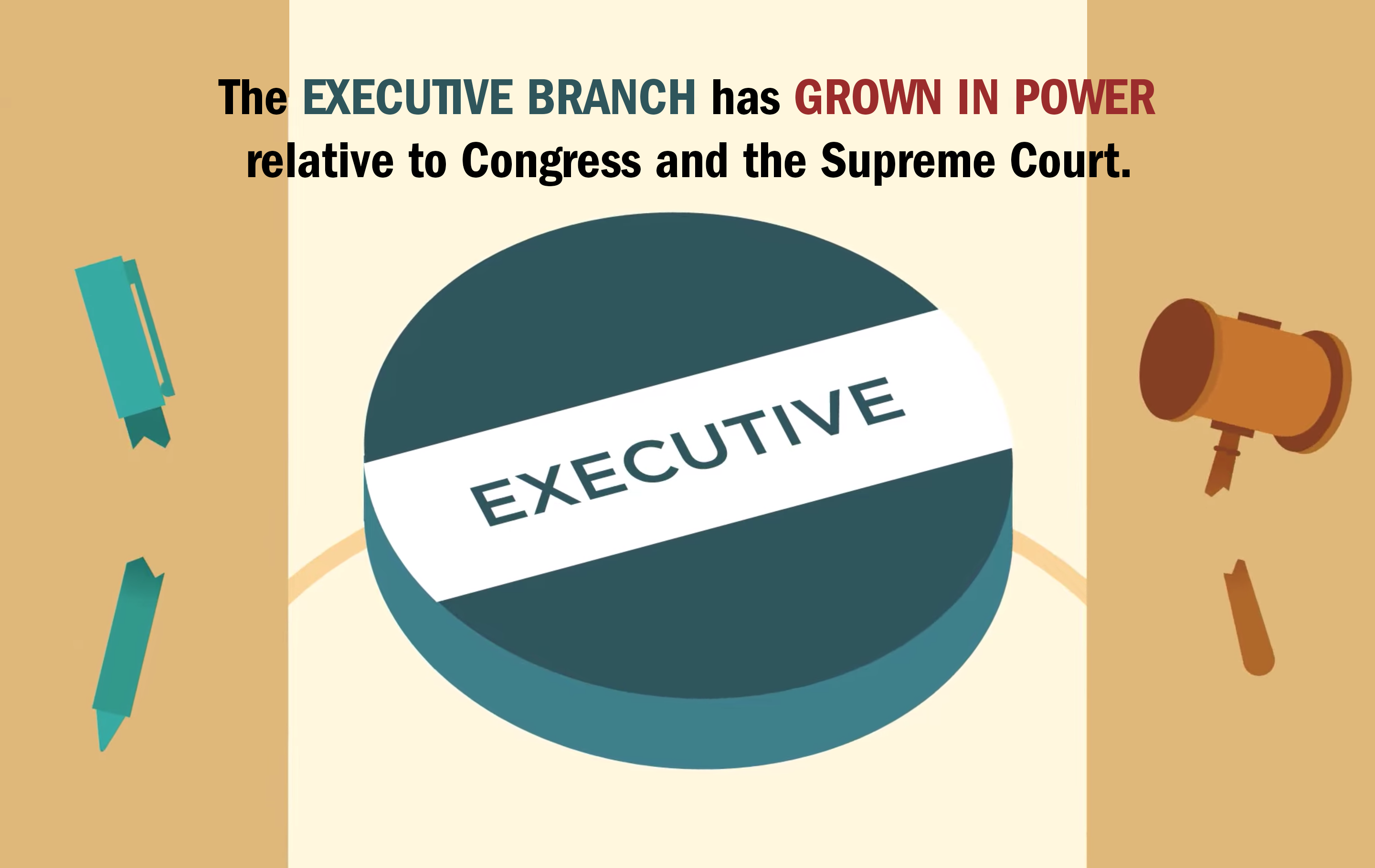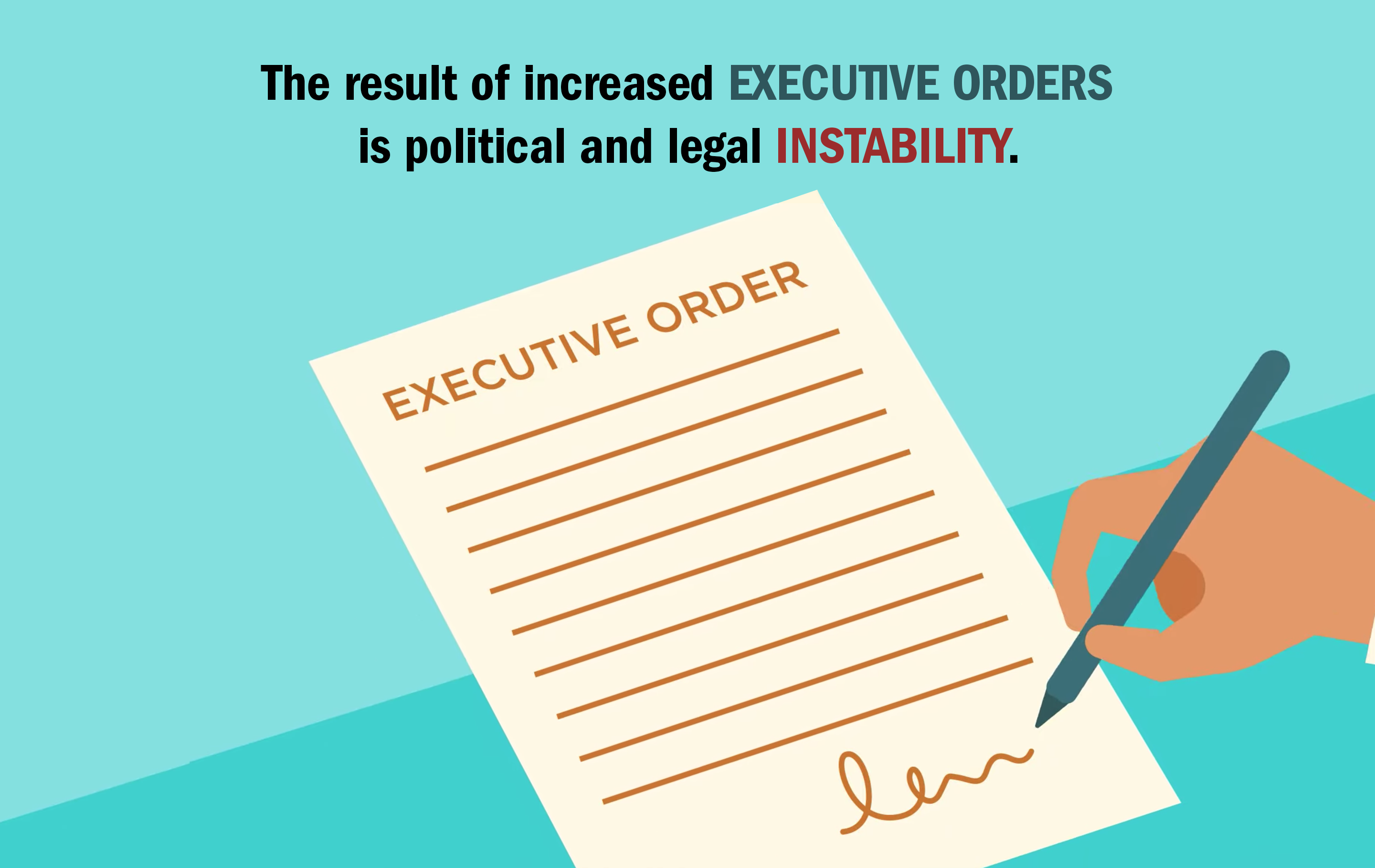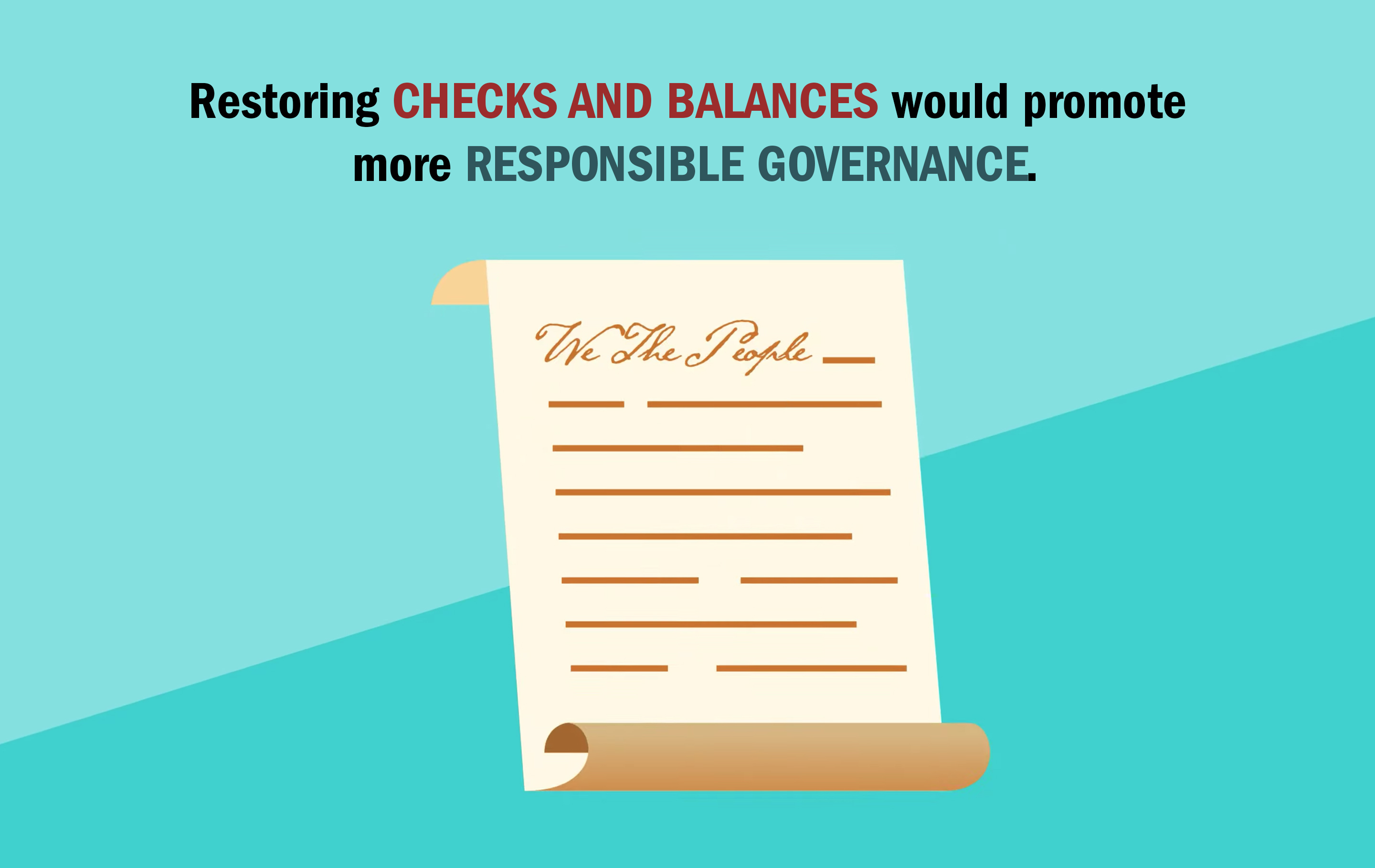Key Facts
The Branches of Government
The framers of the Constitution built in checks and balances to protect individual rights from being violated by a tyranny of the majority. They divided federal authority across three branches to limit each branch’s ability to abuse its power. Congress was created to be the deliberative, law-making body. The executive was to be the enforcer of laws. And the judiciary would resolve constitutional issues.
Bringing Instability
Executive orders and regulations issued in one administration are quickly repealed by the next. And political parties have fewer reasons to compromise when they believe that the only way to govern is to win the presidency and act unilaterally. The result is political and legal instability that threatens our future prosperity and undermines the rule of law.




